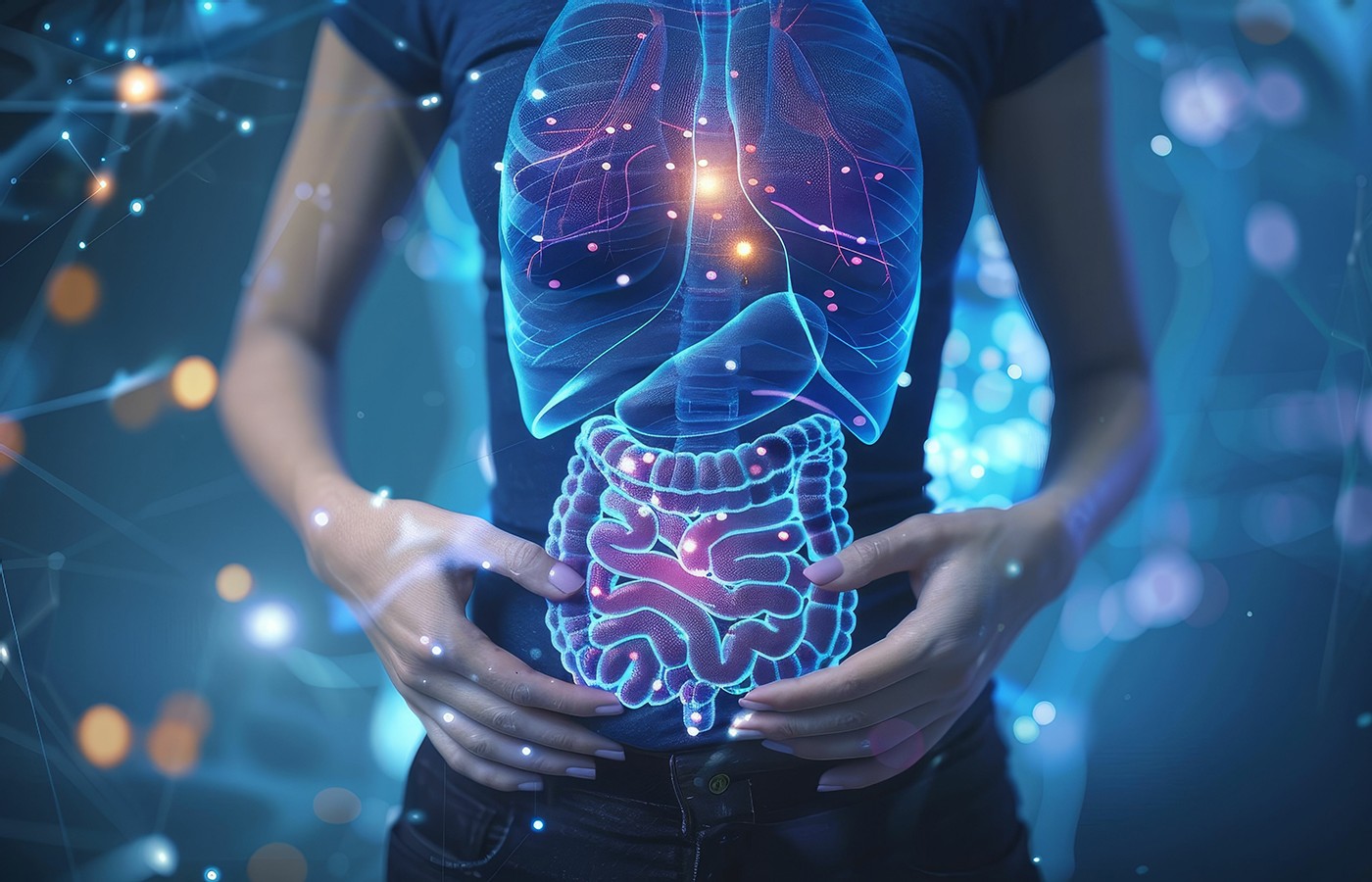Whether you accept it, avoid it or live somewhere in between, insurance coverage has become a defining issue for our profession. Patients increasingly expect to use their benefits, practitioners want to be compensated fairly for their time and expertise, and the system itself remains – at best – fragmented. The encouraging news is that coverage has expanded in meaningful ways. The challenging news is that reimbursement, across the board, remains inadequate.
Regulating the Gut-Lung Axis for Post-Viral Syndromes
Could the yang ming circuit of the Chinese clock hold the keys to modern understanding of the importance of the gut-lung axis for post-viral conditions?
Over the past several years, in the aftermath of a global pandemic, acupuncture has achieved popularity and significant research attention in both Asia and the West for its role in viral and post-viral syndromes. Indeed, with a closer look at the organization of the Chinese meridian system and the work of various modern masters, we can see how acupuncture’s effectiveness for these immune-mediated issues may be through modulation of one of the newer complex systems in biomedicine, the gut-lung axis.
When we view the immune system through the lens of Chinese medicine, we think of the organ function of the lungs and their more superficial, “wei” energetic yang pair, the large intestine. From a broader view we can include the yin and yang earth elements, the spleen and stomach.
From a five-element perspective, these earth elements create the metal lungs and large intestine; and also pair to them through the energetic cycle of the meridian clock – the yang ming/tai yin circuit. The earth can be seen as the root to the immune system and the metal as the visible tree.
These connections speak directly to what we now know in modern biomedicine, that the gut microbiota has a direct effect on pulmonary and immune health through a vital crosstalk between the gut microbiota and the lungs that is referred to as the “gut-lung axis."1 This axis is bidirectional, meaning the endotoxins and microbial metabolites produced in the gut can specifically impact the lungs through the bloodstream and when inflammation occurs in the lung, it directly affects the gut microbiome, mediated through changes in the lungs’ own microbiota.2 The gut, thereby, plays a crucial role in mediating the balance of the immune response both systemically and in the respiratory system.3
The balance of the immune response to a pathogen is crucial, as an inadequate response can lead to pneumonia and death, but an excessive response can lead to cytokine storm and organ failure; or to ongoing inflammation and gut dysregulation seen in post-viral states. Specific to COVID-19, the microbiome also plays a key role in regulating ACE2 expression in both the gut and the lungs.4 The regulation of the ACE2 receptor is key in both the acute and postviral state in which runaway viral replication can lead to a depletion of ACE2 and its important anti-inflammatory, antithrombotic activity in the lungs, the gut and elsewhere.5
There are many effective acupuncture treatment approaches to regulate the immune system. St 36 is likely the most well-studied point for its immunomodulating, antiinflammatory effects.6 From a Japanese perspective, however, especially in acute conditions, Master Nagano’s 7 Tonsillar Points (LI 10/11, SJ 16, Du 14, Kd 6) offer a balanced place to start.7
Classically, the point LI 11 is used to expel heat/inflammation from the lungs and systemically. According to Master Nagano, a famous Japanese acupuncturist who often blended Eastern and Western concepts in his palpation-based style, the whole region between LI 10-LI 11 is considered an “immune region” and should be evaluated to find the most active point.
To find the most effective point in that region, you can palpate to look for a “gummy” or nodule that is often sensitive. In someone with immune dysfunction, many nodules can be found around LI 10-11 and SJ 16, and these are generally the most effective treatment points. The development of the palpable nodules can be attributed to stagnation in the cubital lymph nodes and posterior cervical chain, respectively.
Nagano’s approach expands beyond yang ming/tai yin considerations and includes treatment of the kidneys, based on the mother (lung – metal) child (kidney – water) relationship, and is essential in any immune treatment. Based on the five-element view, by treating and strengthening the kidneys (the child), we take some of the burden off of the lung system in a time of immune wei-qi stress.
Moreover, Kd 6 (Zhaohai, “Shining Sea”) in particular in this system, is thought to have an anti-inflammatory, adrenal-stimulating, cortisol-like effect on the body, while it also provides moisture and fluidity key to a successful immune response. This point is very effective to release tenderness around the umbilicus and Kd 16, which can be considered the root of the gut. GV 14 and SJ 16, on the other hand, are working at the wei level of the neck to try to expel the pathogenic factor before it penetrates to the yang ming level.
Other useful points in this phase include UB 12, Du 16, and GB 20 to further clear the wind and prevent the pathogen from invading further. But as the pathology lingers, treatments should focus on the yang ming zone to nourish the tai yin and yang ming, and also clear remaining pathogenic factors. A classical TCM approach might include LU 5, SP 6, CV 12 (stomach mu) and ST 36, together with the back shu points for lung and spleen (BL 13 and BL 20).
Going beyond this, we can look to points such as St 37 and St 39 (the lower he sea points of the LI and S,I as well as the Sea of Blood points); SP 3, the source and horary earth point; and SP 8, the Xi cleft point. These points can help replenish depleted patients and regulate the GI system. Moreover, if patients are struggling with an uncontrolled immune system or cytokine storm and excessive production of phlegm, then spleen treatments can be especially helpful.
Functionally, the spleen helps to nourish the lungs and through its holding function to prevent the excess release of cytokines, histamine and inflammatory mediators from cells. Master Kiiko Matsumoto discusses the point SP 8 (diji, “Earth’s Crux”) to be a key “regenerative point” to relieve constraint in the abdomen spleen organ area of SP 16. Stagnation at SP 16 puts pressure on the diaphragm and can inhibit lung function, both mechanically and energetically, through tension and irritation of the diaphragm.
The layout of the meridians strengthens this connection as well, as the spleen directly transfers its energy to the lungs at the intersection of SP 20 and Lu 1.
Author’s Note: Part 2 of this article will discuss a Japanese approach to extraordinary vessels, as well as concepts from other schools such as Master Tung to treat the gut-lung axis for post-viral conditions.
References
- Openshaw PJ. Crossing barriers: infections of the lung and the gut. Mucosal Immunol, 2009;(2):100-102.
- Dumas A. The role of the lung microbiota and the gut–lung axis in respiratory infectious diseases. Cell Microbiol, 2018 Dec;20(12):e12966.
- Segal JP, Mak JWY, Mullish BH, et al. The gut microbiome: an under-recognised contributor to the COVID-19 pandemic? Therap Adv Gastroenterol, 2020;13:1756284820974914.
- Koester ST, Li N, Lachance DM, et al. Variability in digestive and respiratory tract Ace2 expression is associated with the microbiome. PLoS One, 2021;16(3):e0248730.
- Rocha VN. Viral replication of SARS-CoV-2 could be self-limitative – the role of the renin-angiotensin system on COVID-19 pathophysiology. Med Hypotheses, 2020 Dec;145:110330.
- Wang M, Liu W, Ge J, Liu S. The immunomodulatory mechanisms for acupuncture practice. Front Immunol, 2023;14:1147718.
- Matsumoto K, Euler D.Kiiko Matsumoto’s Clinical Strategies: In the spirit of Master Nagano, Vol. 1, 2nd Edition. Kiiko Matsumoto International, 2004.



